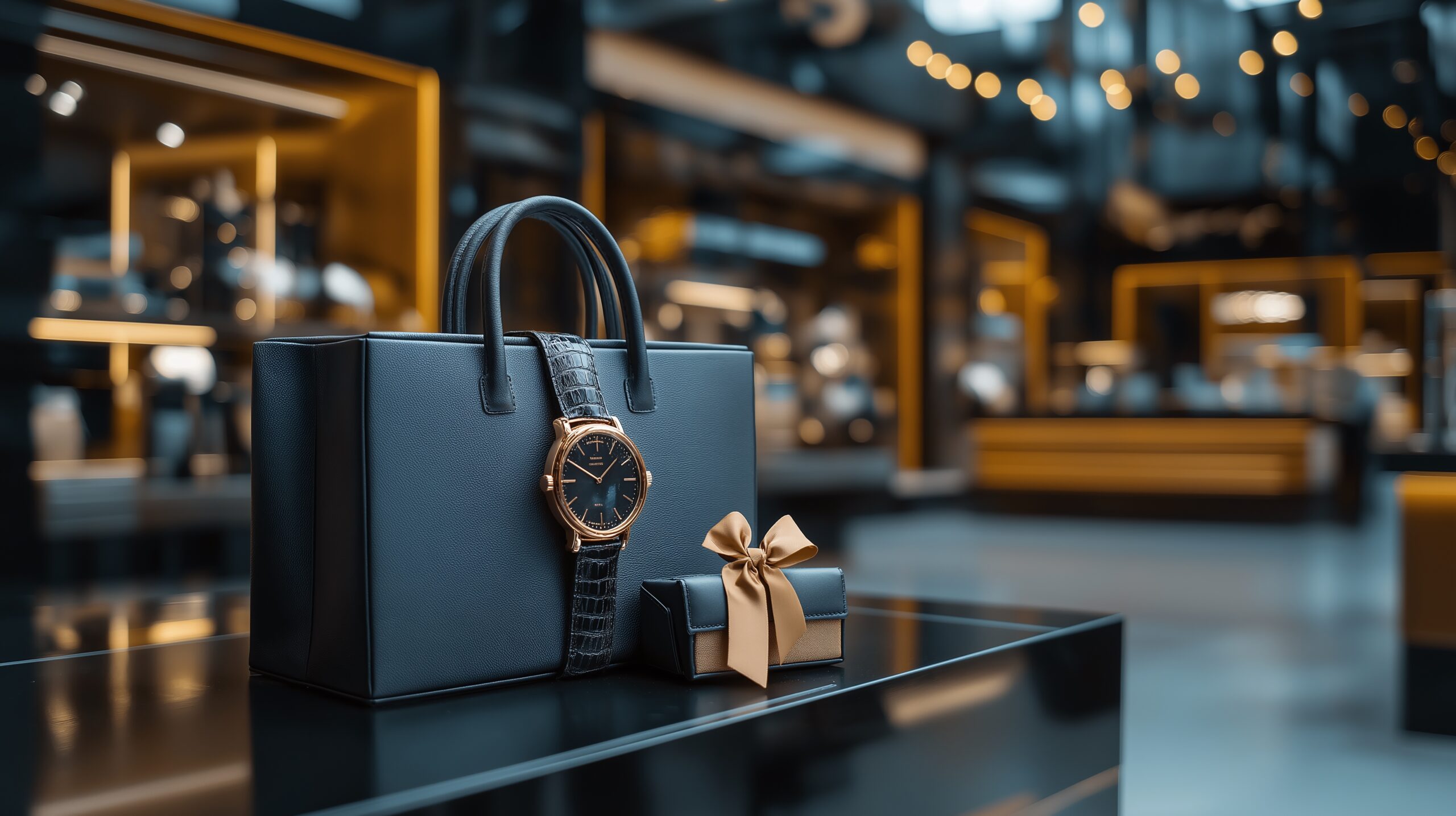What are the most significant brand risks facing luxury brands today? How do ethical sourcing and cultural sensitivity impact brand risk and a luxury brand’s reputation? What proactive strategies can luxury brands implement to protect themselves from reputational, financial, and digital brand risks?
The luxury sector is built on prestige, craftsmanship, and exclusivity, but these very qualities make it uniquely vulnerable to brand risk. A single misstep — whether a cultural controversy, supply chain disruption, or cybersecurity breach — can tarnish even the most revered brands. This blog explores the key brand risks luxury brands face in maintaining their reputations, from ethical sourcing dilemmas to influencer partnerships, and provides actionable solutions to navigate these risks effectively.
In today’s fast-paced digital world, where social media scrutiny is relentless and consumer expectations are at an all-time high, luxury brands must adopt robust brand risk management strategies. From ensuring supply chain transparency to fortifying cybersecurity defenses, this blog outlines essential risk mitigation approaches that empower luxury houses to safeguard their legacy, protect consumer trust, and maintain long-term success in an ever-evolving market.
Table of Contents:
Ethical Sourcing & Labor Practices
Cultural Insensitivity & Appropriation
Celebrity Endorsement & Influencer Risks
Negative Online Reviews & Social Media Backlash
Data Breaches & Cybersecurity Threats
Counterfeiting, IP Infringement, and the Gray Market
Changing Regulations & Compliance
Introduction
The luxury sector thrives on a delicate balance: exclusivity, heritage, artistry, and an impeccable reputation. These very elements, however, create unique vulnerabilities.
A single misstep — a culturally insensitive campaign, a supply chain disruption, a data breach — can inflict astronomical damage, eroding consumer trust, and jeopardizing a brand’s meticulously crafted legacy. In today’s interconnected world, where digital scrutiny is relentless and consumer expectations are even higher, managing brand risk isn’t just important—it’s imperative for any successful luxury brand strategy.
This blog delves into the complex landscape of brand risk in the luxury sector, exploring key challenges across reputational, operational, digital, and legal domains. It examines proactive mitigation strategies that empower luxury brands to safeguard their reputation, maintain consumer confidence, and ensure long-term success in a rapidly changing market. From ethical sourcing to cybersecurity, this blog provides a practical roadmap for navigating the intricacies of brand risk management and building resilience in the face of uncertainty.
Reputational Risks
A brand’s reputation is its most valuable asset. It defines the brand’s essence and resonates deeply with consumers. Protecting this invaluable asset requires constant vigilance and a proactive approach to managing a wide range of potential risks that can tarnish a brand’s image and erode consumer trust.
Ethical Sourcing & Labor Practices
Ethical sourcing and fair labor practices are no longer optional; they are a defining aspect of a luxury brand’s identity. Consumers are increasingly aware of social and environmental issues and are quick to criticize brands perceived as unethical. Failing to meet these heightened expectations can result in significant reputational damage and even expose the brand to legal repercussions.
The 2024 investigation into Dior’s labor practices by a Milan court, where the brand was found to be negligent in overseeing its supply chain, serves as a stark reminder of the potential consequences of unethical operations. Such cases can have a widespread impact, damaging not only the individual brand’s reputation, but also creating a ripple effect across the entire luxury sector.
To mitigate risks, luxury brands should prioritize:
- Transparency & Traceability: Robust systems for tracking materials and products throughout the supply chain allow brands to monitor their sourcing practices and share this information with consumers, building trust and confidence.
- Third-Party Certifications: Certifications from recognized and respected third-party organizations, such as the Forest Stewardship Council (FSC), provide independent validation of ethical sourcing practices and enhance the brand’s credibility.
- Stakeholder Engagement: Actively engaging with a wide range of stakeholders, including NGOs, labor unions, and local communities, ensures ethical practices are upheld throughout all stages of production and provides valuable external perspectives.
Cultural Insensitivity & Appropriation
Luxury brands often draw inspiration from diverse global cultures. While such inspiration can enrich collections and campaigns, it must be approached with the utmost respect and sensitivity. Two prominent examples highlight the potential pitfalls: Chanel’s 2017 controversy surrounding a high-priced boomerang, which was criticized for trivializing a sacred object for Indigenous Australian cultures, and D&G’s 2018 ad campaign featuring a Chinese model awkwardly attempting to eat Italian food with chopsticks, which was widely condemned as condescending and stereotypical. These incidents demonstrate the risks of cultural appropriation and insensitivity.
To mitigate these risks, luxury brands should:
- Cultivate Cultural Sensitivity: Provide comprehensive training for design and marketing teams to enhance their understanding of cultural nuances and sensitivities. This education can help prevent unintentional missteps and foster a culture of respect.
- Embrace Diverse Voices: Integrate diverse perspectives within the brands’ internal teams and advisory boards. This inclusion ensures that a wider range of viewpoints are considered and can help identify potential cultural sensitivities.
- Engage with Communities: Consult directly with members of cultures being represented to ensure authenticity and avoid unintentional harm. This direct engagement fosters mutual understanding and respect.
Celebrity Endorsement & Influencer Risks
Celebrity endorsements and influencer partnerships are powerful tools for luxury brands, offering access to wider audiences and enhancing brand desirability. However, these partnerships carry inherent risks. A celebrity’s or influencer’s actions, both public and private, can reflect negatively on a brand, potentially tarnishing its carefully cultivated image. For example, an influencer promoting a competitor’s product or engaging in controversial behavior can damage the brand’s credibility and alienate its loyal customers.
To mitigate these risks, luxury brands should prioritize:
- Thorough Due Diligence: Extensive background checks on potential partners are necessary to ensure alignment with brand values and identify red flags. This due diligence should encompass a review of their past behavior, public statements, and social media presence.
- Morality Clauses: Contracts with celebrities and influencers should have robust morality clauses. These clauses should outline specific ethical standards and provide the brand with legal recourse in the event of misconduct.
- Crisis Communication Plans: Clear and comprehensive crisis communications plans should be in place to address potential negative publicity involving a partner. These plans should outline procedures for swift and coordinated responses to mitigate reputational damage.
Operational & Financial Risks
Beyond reputation concerns, several other categories of brand risk are essential to evaluate. A luxury brand’s operational and financial health is intrinsically linked to its reputation. When these areas are unstable, consumer confidence can erode quickly.
Supply Chain Disruptions
Luxury brands depend on complex and intricate global supply chains, making them vulnerable to a range of disruptions, including geopolitical tensions, natural disasters, pandemics, and unforeseen logistical challenges.
These disruptions can delay shipments, set back product timelines, and impact the brand’s ability to meet customer demand. While these disruptions are often outside the brand’s control, they can still result in financial losses and frustrated customers, ultimately harming the luxury house’s reputation. A resilient and adaptable supply chain is essential for maintaining continuous operations and meeting customer expectations.
Despite the challenging nature of supply chain disruptions, there are ways to mitigate this brand risk:
- Diversification: Diversifying sourcing and manufacturing across multiple geographic locations reduces dependency on a single region or manufacturer and mitigates the impact of localized disruptions.
- Inventory Management: Brands should have a robust digital inventory management system that provides real-time visibility into stock levels and allows for agile adjustments to production and distribution. This system should be accessible to all relevant departments to ensure preparedness for unexpected disruptions.
- Supplier Relationships: Strong and collaborative relationships should be cultivated with key suppliers. These relationships can prove invaluable during times of crises, ensuring prioritization and support for the brand’s need and maintaining continuity of production.
Economic Downturns
Luxury goods, by their very nature, are discretionary purchases. This makes them particularly vulnerable to economic downturns and fluctuations in consumer spending. This vulnerability was highlighted in The Business of Fashion-McKinsey State of Fashion 2025 report, which detailed how fashion shoppers are adopting more cost-conscious behaviors than in previous years.
During periods of economic uncertainty, consumer spending on discretionary items like luxury goods tends to decrease, posing a significant risk to luxury brands. While the overall state of the economy is beyond a brand’s control, there are strategies that luxury brands can employ to enhance their resilience and adapt to changing economic conditions without compromising their exclusive appeal.
- Value Proposition: Brands must clearly communicate and reinforce the enduring value proposition of luxury products. By emphasizing the craftsmanship, heritage, and timeless quality of luxury goods, they are immediately differentiated from more mainstream offerings. This reminds consumers of the intrinsic value they receive and justifies the premium price point.
- Market Diversification: Exploring new and emerging markets can broaden a brand’s customer base and reduce reliance on any single market. This diversification can help offset declines in spending in one region with growth in another. Additionally, brands should consider diversifying product categories to appeal to a wider range of consumer needs and preferences.
- Adjust Pricing Strategies: Brands should consider adjusting pricing strategies to adapt to changing economic conditions. This might involve introducing more accessible product lines or offering limited edition items at more attainable price points. These adjustments can attract a wider range of buyers while maintaining a sense of exclusivity.
Failure to Innovate & Adapt
The luxury landscape is in a constant state of evolution. Consumer preferences change, new technologies emerge, and competitive pressures intensify. Brands that fail to innovate and adapt to these changing dynamics risk losing market share to more agile competitors. This failure to keep pace with the evolving market can lead to brand stagnation and, ultimately irrelevance.
However, with thoughtful strategies and proactive mitigations, luxury brands can enhance their agility and embrace opportunities for growth and innovation while preserving their timeless image and exclusive appeal.
- Regular Market Research: Conducting regular and thorough market research to stay informed about evolving consumer preferences, emerging trends, and shifts in the competitive landscape equips brands with the knowledge needed to anticipate and respond effectively to changing demands.
- Product Development: Investing in research and development to drive continuous product innovation is critical. Design and product development teams should be empowered to create groundbreaking products that push the boundaries of luxury and capture the imagination of discerning consumers. This investment in innovation is an investment in the brand’s future.
- Digital Transformation: Brands should embrace digital technologies to enhance the luxury experience and engage customers in new and innovative ways. By exploring technologies like virtual showrooms, augmented reality experiences, and personalized online services, brands can create a seamless and enriching customer journey.
Digital & Social Media Risks
In today’s digitally driven world, the online landscape presents both immense opportunities and significant risks for luxury brands. Effectively managing a brand’s online presence and mitigating potential digital risks is crucial for protecting brand reputation and maintaining customer trust.
Negative Online Reviews & Social Media Backlash
News, both positive and negative, travels at lightning speed on social media. Negative press, bad reviews, or critical comments can quickly spread across the internet, significantly impacting brand perception and potentially alienating customers. Luxury brands must actively manage their online presence and respond to negative feedback promptly and effectively to mitigate potential fallout.
To avoid online backlash, brands can implement several mitigation strategies:
- Social Listening Tools: Digital tools and platforms can be used to monitor online conversations, track brand mentions, and analyze audience sentiment. This allows brands to identify potential crises early and intervene proactively.
- Community Management: Brands need to invest in teams to engage with customers, address concerns, and resolve complaints in a timely and professional manner. This demonstrates responsiveness and builds trust.
- Proactive Reputation Management: Online reputation can be proactively managed by sharing positive stories, engaging content, and authentic brand narratives that showcase brand values and heritage. This helps counterbalance any negative sentiment and reinforces the brand’s positive image.
Data Breaches & Cybersecurity Threats
Luxury brands collect vast amounts of sensitive customer data, including personal information, purchase history, and payment details. This makes them attractive targets for data breaches and cybersecurity threats. These breaches can result in significant financial losses, irreparable reputational damage, and legal repercussions. Robust cybersecurity measures are essential for protecting customer data, preserving brand exclusivity, and maintaining consumer trust.
These mitigation strategies can be used to protect customer data and preserve the brand’s trustworthiness:
- Cybersecurity Investment: Investing in advanced cybersecurity systems, software, and expertise to protect sensitive data, as well as conducting regular security audits and penetration testing, helps brands identify and address vulnerabilities.
- Data Encryption: Encrypting sensitive customer data, both in transit and at rest, adds an extra layer of protection in the event of a breach, making it more difficult for hackers to access and exploit stolen information.
- Employee Training: Comprehensive cybersecurity training should be provided for all employees. This training should cover best practices for password management, phishing awareness, and other common security risks. Educated employees are the first line of defense against many cyber threats.
Legal & Regulatory Risks
Navigating the complex and ever-evolving legal and regulatory landscape is a critical aspect of brand management for luxury companies. Failure to comply with applicable laws and regulations can result in costly penalties, significant reputational damage, and erosion of consumer trust.
Counterfeiting, IP Infringement, and the Gray Market
Counterfeiting and intellectual property (IP) infringement, including the unauthorized use of trademarks, copyrights, designs, and patents, pose significant threats to the luxury industry. Counterfeit goods undermine brand value, cause revenue loss, deceive customers, and dilute the brand’s carefully cultivated image of exclusivity. Unauthorized sales through gray markets, where genuine products are sold outside of authorized distribution channels, further exacerbate this issue.
Protecting IP rights is essential to maintaining brand equity and the perceived value of luxury goods. The Walmart Birkin incident, where the retailer sold a copy of the iconic Hermés Birkin bag for a small fraction of the price, or the numerous sellers of counterfeit Louis Vuitton bags along the streets of New York, exemplifies this risk.
Combating these issues requires a diligent, multi-pronged approach:
- Enforcement: Brands need to actively monitor online marketplaces and physical retail locations for counterfeit products, infringing goods, and unauthorized sales and take legal action as appropriate.
- Law Enforcement Collaboration: Collaborating with law enforcement agencies to identify and dismantle counterfeit operations is essential. Sharing information and intelligence can help authorities track down and prosecute counterfeiters.
- Anti-Counterfeiting Technology: Implementing advanced anti-counterfeiting technologies, such as RFID, microdots, and blockchain-based authentication systems, can help verify authenticity and trace products throughout the supply chain.
- IP Registration and Recordation: To protect designs globally, luxury brands need to register and record their IP, including all trademarks, patents, and designs, to protect them from unauthorized use, including importation.
- Channel Management: By strengthening control over distribution channels, brands can minimize the risk of gray market activity. This can involve stricter contracts with authorized retailers, enhanced monitoring of sales channels, and proactive measures to identify and address unauthorized sellers.
- Consumer Education: Educating consumers about the risk of counterfeiting and the importance of purchasing authentic luxury goods helps reinforce the value of the actual product and luxury as a whole.
Changing Regulations & Compliance
The luxury industry is subject to a wide range of regulations related to product safety, labeling, advertising, environmental protection, and labor practices. These regulations can vary significantly across different regions and jurisdictions. Non-compliance can lead to hefty fines, product recalls, reputational damage, and legal challenges. Compliance is not merely a legal obligation; it is a necessity for maintaining business operations, protecting the brand’s reputation, and preserving consumer trust.
These mitigations can help ensure a luxury brand’s integrity:
- Legal Expertise: Luxury brands should have teams of reliable legal experts, specializing in the luxury industry and the specific regulations relevant to the brand’s operations. This expertise is essential for navigating the complexities of international law and ensuring compliance across different jurisdictions.
- Compliance Programs: Robust internal compliance programs to monitor and enforce regulatory standards are critical. These programs should include clear policies and procedures, regular training for employees, and mechanisms for reporting and addressing potential violations.
- Industry Monitoring: Staying informed about regulatory changes and updates by monitoring industry publications, attending conferences, and engaging with trade associations allows brands to adapt quickly and efficiently to new regulations and avoid potential penalties.
Conclusion
In the luxury industry, brand risk is multi-faceted and ever-changing. From reputational and operational challenges to digital and legal threats, navigating these complexities requires a proactive, comprehensive, and strategic approach.
Effective brand risk management requires constant adaptation to maintain long-term brand equity and consumer trust, which is essential for a luxury brand’s longevity. By embracing transparency, innovation, and a culture of resilience, luxury brands can safeguard their reputation, protect their exclusivity, and solidify their position as industry leaders for enduring success.




